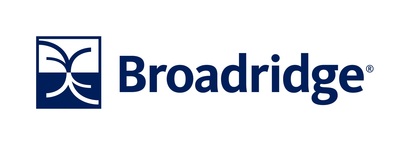New Fintech Delivery Model Transforming Financial Services Through Mutualized Services, Highlighted in Whitepaper from Broadridge
Rhea-AI Summary
Broadridge Financial Solutions (NYSE: BR) has released a new whitepaper discussing the shift toward mutualization in the financial services sector post-pandemic. This model offers faster access to technology, scalability, and cost savings. The whitepaper outlines key advantages of mutualization including improved efficiency and reduced transformation risk, driven by factors like cost pressures and regulatory changes. It serves as a roadmap for firms aiming to adopt this service delivery model, highlighting necessary elements and critical questions for executives.
Positive
- Mutualization model enables enhanced scalability and technology access.
- The whitepaper provides a roadmap for firms, aiding in technology adaptation.
- Identifies long-term benefits including cost savings and operational productivity.
Negative
- None.
News Market Reaction 1 Alert
On the day this news was published, BR declined 1.11%, reflecting a mild negative market reaction.
Data tracked by StockTitan Argus on the day of publication.
NEW YORK, May 11, 2021 /PRNewswire/ -- As the financial services industry confronts the new realities of a post-pandemic era, many firms are beginning to shift toward mutualization models for their technology and operations, according to a new whitepaper released today by global Fintech leader Broadridge Financial Solutions, Inc. (NYSE:BR). Mutualization is a model where participants more quickly gain access to new technologies, scalability, and resiliency while saving time, money, and risk; by sharing in the benefits of an industry solution provided by a reliable, trusted, and independent third party.
The latest industry whitepaper from Broadridge highlights the benefits of this new model for Fintech service delivery in the context of a post-pandemic world. As more financial services organizations digitize their operations and contend with rising cost pressures, mutualization enables Fintech firms to improve efficiency, accelerate time-to-market and reduce transformation risk – all while freeing up management attention and other critical resources that can be devoted to other core needs.
"Implementation of a mutualized model allows firms to increase operational productivity, resiliency and efficiency that are the hallmarks of a modern, modular approach to service delivery," said Michael Tae, Chief Transformation Officer at Broadridge. "We developed this report after many conversations with clients who shared their interest in mutualization but felt uncertain about where to begin updating their technology functions. This whitepaper serves as both a useful guide to those interested in expansion and an informational tool to firms that are just beginning their technology journey."
The new whitepaper serves as a roadmap for financial services firms hoping to establish a mutualized service delivery model. Highlights from the paper include:
- The four forces driving mutualization: margin and cost pressures, regulatory change, digitization and infrastructure shocks
- The long-term benefits of mutualization: cost savings, regulatory compliance, operational productivity, and resiliency and innovation at scale
- The elements needed to establish a new model of mutualized service delivery
- The key questions every financial services executive should ask as they embark on the path towards mutualized service delivery
To learn more about the momentum mutualization is gaining across the financial services landscape, download the whitepaper from Broadridge: Modernizing Through Mutualization: A New Model for Fintech Service Delivery in a Post-Pandemic World.
About Broadridge
Broadridge Financial Solutions (NYSE: BR), a global Fintech leader with over
Broadridge Investors:
W. Edings Thibault
Investor Relations
(516) 472-5129
Media:
Gregg Rosenberg
Corporate Communications
Gregg.Rosenberg@Broadridge.com
(929) 288-0774
![]() View original content to download multimedia:http://www.prnewswire.com/news-releases/new-fintech-delivery-model-transforming-financial-services-through-mutualized-services-highlighted-in-whitepaper-from-broadridge-301288104.html
View original content to download multimedia:http://www.prnewswire.com/news-releases/new-fintech-delivery-model-transforming-financial-services-through-mutualized-services-highlighted-in-whitepaper-from-broadridge-301288104.html
SOURCE Broadridge Financial Solutions, Inc.









